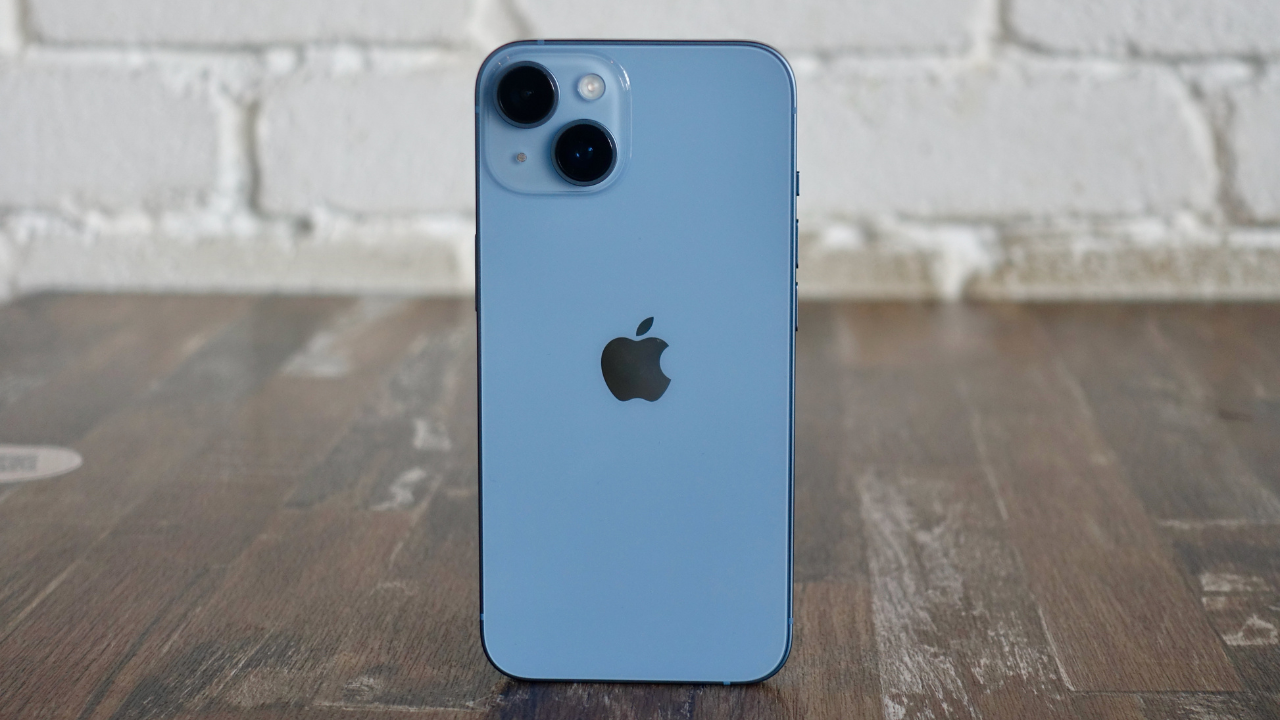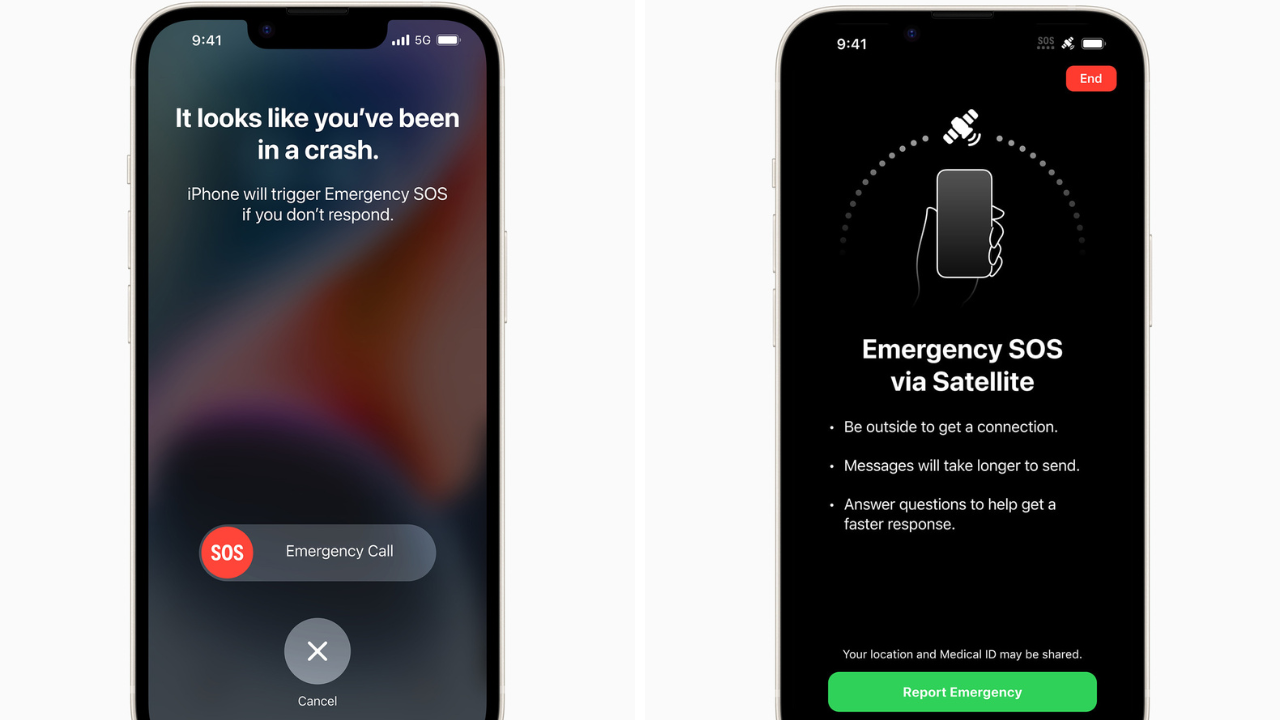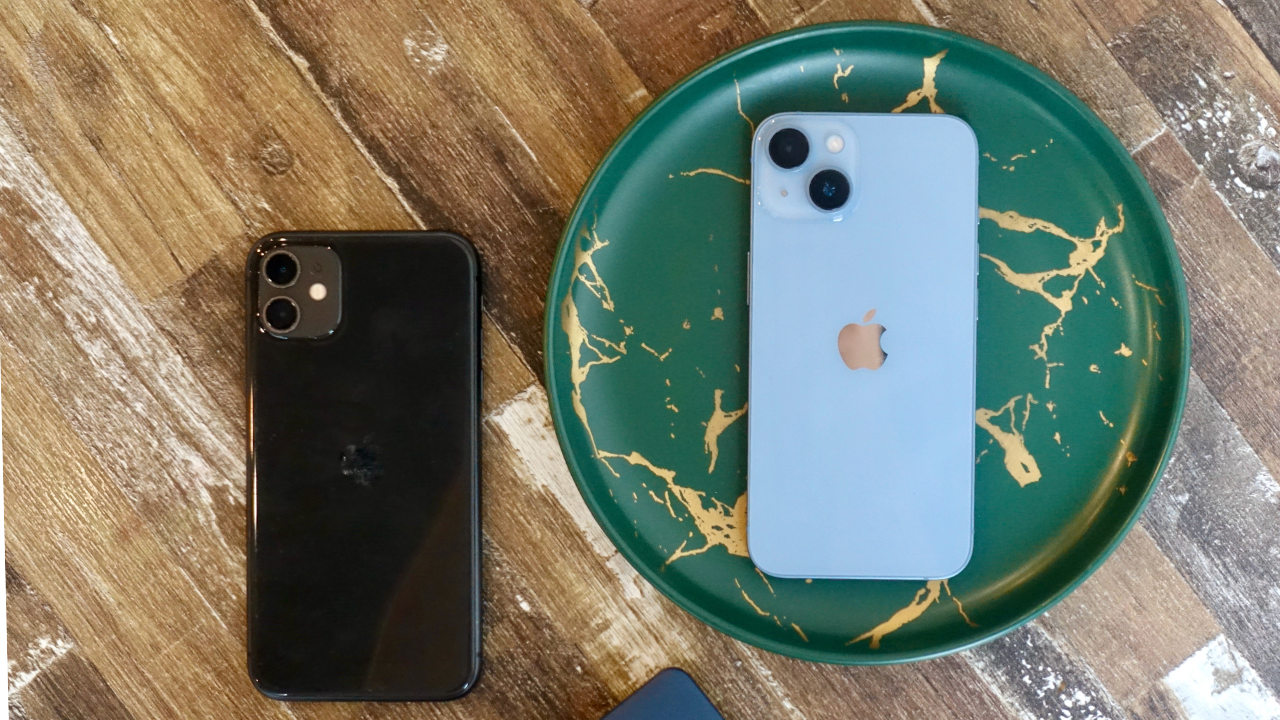Yes, the iPhone 13 Pro has obvious standout features that make it "better" than the iPhone 14, but we're merely highlighting things that aren't available on the 13, for better or for worse.
Every time Apple refreshes its phone lineup, cyber sleuths pore through the spec sheet to find any reasons to upgrade or not upgrade.
With the iPhone 14, the hero upgrades are the improved main camera with bigger sensor, Photonic Engine, Crash Detection, Action Mode, a better thermal design, and a brighter front camera with autofocus.
Most are calling this a small upgrade, and that it should be called the iPhone 13S. So we looked into the technical specs to try to find out if it really was, as they say, small. Image: iFixit
Image: iFixit
We wanted to put this point up top because some don’t know this, but the iPhone 14’s back and front panels are now easier to repair than ever.
The iPhone 12 and 13 were infamous for their back glass replacements that required lasers and cost about RM600 for repairs from third parties and RM2,900 from authorised Apple service centers on a one-to-one exchange (i.e., not possible to repair).
iFixit revealed that the iPhone 14’s redesign removes this problem and makes it easier to repair and presumably, lighter on your wallet. That said, Nnither the official service centre nor third party repairers had the estimated cost for fixing at the time of writing.
Upgrade if: You don't want to replace your entire phone every time you drop your phone. Well... third party repairs aren't that expensive. But you're still better off with a more repairable phone.
As usual, the camera received a lot of love this year. Some small, some big, and your mileage may vary. For your reference, these are all the changes that give the 14 an edge over 13 Pro and 13:
For the rest of us, the biggest advantage of the iPhone 14 over the rest are the brighter lenses that help you take photos in low light. This means you don’t have to hold your camera steady for so long compared to older models.
The Photonic Engine, faster aperture, and newer sensors help you take low light photos or photos in challenging lighting a lot easier.
While night photography was faster, we couldn’t see the Photonic Engine’s effets in action. It’s hard to objectively test the feature and score the improvements, but since it’s a software feature, we can only assume it will get better.
If you don’t upgrade to the iPhone 14 now, you won’t receive any of these updates in the future either.
Upgrade if: You shoot in 4K, feel left out that the Photonic Engine and Action Mode features aren’t available in any other model, and you shoot in low light a lot.
Bluetooth similarly was updated to 5.3 compared to 5.0 which comes with a few improvements namely: higher security when connecting devices, there’s lesser interference in your connection, and it lowers energy consumption of devices.
We’re not technically savvy enough to explain why this is a big deal, so you can watch this Bluetooth 5.3 explainer to learn more.
Not much to say about the updated thermal design, it’s Malaysia, it’s hot, your phone is gonna get hot. Unless they stick a tiny fan in there, your phone will get hot.
We also have to mention that there’s suspiciously little said about the updated thermal design. We’ve watched three teardown videos and none mention any change in thermal design.
Finally, the ambient light sensor on the back helps the phone’s auto brightness feature and helps the camera’s exposure when moving from extreme light conditions—from a dark room to bright sunlight for example.
Again, it’s hard to test the ambient light sensors. What we know is that, it’s there, and on older phones there's only one.
Upgrade if: You want a future-proof phone that will connect to the newest Bluetooth devices. We also don’t know what Apple or future app developers can do with the additional ambient light sensor.
Technically it’s three features, but we’ll lump two together and separate the hardware portion:
Crash Detection as a software feature is available only for iPhone 14 and above. It uses the new gyro and accelerometer to determine if you’ve been in a crash and automatically dials emergency services and provides a voice loop notifying of the crash and location.
You can set up or disable this feature in your Emergency SOS setting. After calling emergency services according to your country, it will also call your emergency contact that you’ve setup.
Both features have a 10 second timer before the call so you can turn it off if it falsely triggers.
Emergency SOS allows you to text even while off grid. Say you’re in the middle of the ocean for example without service.
The feature is supposed to be a paid feature but will be available for free for 2 years for newly activated iPhone generation 14 phones.
On the hardware side, the high dynamic range gyro and high-g accelerometer presents some interesting potential for more use cases. Again, we don’t know how it may be used in the future, maybe a game will require a more precise gyro for a better experience. Maybe they’ll use it in Apple Fitness.
Upgrade if: Well, it’s hard to say. Upgrade if you think you’re going to be in a crash off-grid we guess. We know Malaysia might be the perfect place to use Crash Detection, but can you imagine Siri calling 999, and a local receiver hearing the automated message?
We already get so many scam calls from robots, would our emergency responders know that this wasn’t a prank call?
So there’s 14 things that make the iPhone 14 stand out from the iPhone 13. On a macro level, these changes sound small. But Apple has a reputation for creating scarcity.
Think the chips are the same? Here’s an extra GPU. Think the cameras aren’t that different? Well, here’s a Photonic Engine and Action Mode that’s only available on this phone—even though it’s only software.
Don’t use any feature on your phone except TikTok and WhatsApp? Here’s a better battery for you to enjoy content even longer and it won’t run as hot because we designed it to run cooler.
At RM4,199 for 128GB, the iPhone 14 is not cheap (well, when is anything from Apple cheap?). Add another RM250 and you can get an iPhone 13 Pro from authorised resellers (RM4,449 at time of writing) or you can save RM500 and get the iPhone 13 (RM3,699) that’s still being sold now.
If you're upgrading from anything before iPhone 13, the choice is pretty obvious. You will benefit from the upgrade all-around.
If you own the iPhone 13, the choice comes down to how much you want to be part of Apple's next wave of features via its Photonic Engine, Action Mode, and Crash Detection.
Every time Apple refreshes its phone lineup, cyber sleuths pore through the spec sheet to find any reasons to upgrade or not upgrade.
With the iPhone 14, the hero upgrades are the improved main camera with bigger sensor, Photonic Engine, Crash Detection, Action Mode, a better thermal design, and a brighter front camera with autofocus.
Most are calling this a small upgrade, and that it should be called the iPhone 13S. So we looked into the technical specs to try to find out if it really was, as they say, small.
Repairability (1 BIG improvement)
 Image: iFixit
Image: iFixitWe wanted to put this point up top because some don’t know this, but the iPhone 14’s back and front panels are now easier to repair than ever.
The iPhone 12 and 13 were infamous for their back glass replacements that required lasers and cost about RM600 for repairs from third parties and RM2,900 from authorised Apple service centers on a one-to-one exchange (i.e., not possible to repair).
iFixit revealed that the iPhone 14’s redesign removes this problem and makes it easier to repair and presumably, lighter on your wallet. That said, Nnither the official service centre nor third party repairers had the estimated cost for fixing at the time of writing.
Upgrade if: You don't want to replace your entire phone every time you drop your phone. Well... third party repairs aren't that expensive. But you're still better off with a more repairable phone.
Cameras, cameras, action (7 improvements)

As usual, the camera received a lot of love this year. Some small, some big, and your mileage may vary. For your reference, these are all the changes that give the 14 an edge over 13 Pro and 13:
- Front camera now comes with autofocus
- Front camera has a faster lens at f/1.9 compared to f/2.2
- Main camera is an f/1.5 compared to the f/1.6 on the iPhone 13. The iPhone 13 Pro has the same f/1.5 camera
- Front camera now supports HDR video recording with Dolby Vision up to 4k at 60 fps compared to only 1080p previously
- Cinematic mode on both cameras now record up to 4K HDR at 30fps
- Photonic Engine (though a software solution, it’s not available in older phones)
- Action Mode another software correction for shaky videos that outputs 2.8K at 60 fps
For the rest of us, the biggest advantage of the iPhone 14 over the rest are the brighter lenses that help you take photos in low light. This means you don’t have to hold your camera steady for so long compared to older models.
The Photonic Engine, faster aperture, and newer sensors help you take low light photos or photos in challenging lighting a lot easier.
While night photography was faster, we couldn’t see the Photonic Engine’s effets in action. It’s hard to objectively test the feature and score the improvements, but since it’s a software feature, we can only assume it will get better.
If you don’t upgrade to the iPhone 14 now, you won’t receive any of these updates in the future either.
Upgrade if: You shoot in 4K, feel left out that the Photonic Engine and Action Mode features aren’t available in any other model, and you shoot in low light a lot.
Updated internals—including thermals (4 improvements)
These changes are not as overt, but have bigger implications than most realise. Here they are:- A15 Bionic has 1 extra GPU core compared to the iPhone 13
- Bluetooth for all 14 models is the new Bluetooth 5.3 standard
- Updated thermal design means the phone won’t run so hot
- There’s two ambient light sensors, one at the front and one at the back
Bluetooth similarly was updated to 5.3 compared to 5.0 which comes with a few improvements namely: higher security when connecting devices, there’s lesser interference in your connection, and it lowers energy consumption of devices.
We’re not technically savvy enough to explain why this is a big deal, so you can watch this Bluetooth 5.3 explainer to learn more.
Not much to say about the updated thermal design, it’s Malaysia, it’s hot, your phone is gonna get hot. Unless they stick a tiny fan in there, your phone will get hot.
We also have to mention that there’s suspiciously little said about the updated thermal design. We’ve watched three teardown videos and none mention any change in thermal design.
Finally, the ambient light sensor on the back helps the phone’s auto brightness feature and helps the camera’s exposure when moving from extreme light conditions—from a dark room to bright sunlight for example.
Again, it’s hard to test the ambient light sensors. What we know is that, it’s there, and on older phones there's only one.
Upgrade if: You want a future-proof phone that will connect to the newest Bluetooth devices. We also don’t know what Apple or future app developers can do with the additional ambient light sensor.
Life saving features (2 features)

Technically it’s three features, but we’ll lump two together and separate the hardware portion:
- Crash Detection
- Emergency SOS via satellite
- New high dynamic range gyro and high-g accelerometer
Crash Detection as a software feature is available only for iPhone 14 and above. It uses the new gyro and accelerometer to determine if you’ve been in a crash and automatically dials emergency services and provides a voice loop notifying of the crash and location.
You can set up or disable this feature in your Emergency SOS setting. After calling emergency services according to your country, it will also call your emergency contact that you’ve setup.
Both features have a 10 second timer before the call so you can turn it off if it falsely triggers.
Emergency SOS allows you to text even while off grid. Say you’re in the middle of the ocean for example without service.
The feature is supposed to be a paid feature but will be available for free for 2 years for newly activated iPhone generation 14 phones.
On the hardware side, the high dynamic range gyro and high-g accelerometer presents some interesting potential for more use cases. Again, we don’t know how it may be used in the future, maybe a game will require a more precise gyro for a better experience. Maybe they’ll use it in Apple Fitness.
Upgrade if: Well, it’s hard to say. Upgrade if you think you’re going to be in a crash off-grid we guess. We know Malaysia might be the perfect place to use Crash Detection, but can you imagine Siri calling 999, and a local receiver hearing the automated message?
We already get so many scam calls from robots, would our emergency responders know that this wasn’t a prank call?
Upgrade or no?

So there’s 14 things that make the iPhone 14 stand out from the iPhone 13. On a macro level, these changes sound small. But Apple has a reputation for creating scarcity.
Think the chips are the same? Here’s an extra GPU. Think the cameras aren’t that different? Well, here’s a Photonic Engine and Action Mode that’s only available on this phone—even though it’s only software.
Don’t use any feature on your phone except TikTok and WhatsApp? Here’s a better battery for you to enjoy content even longer and it won’t run as hot because we designed it to run cooler.
At RM4,199 for 128GB, the iPhone 14 is not cheap (well, when is anything from Apple cheap?). Add another RM250 and you can get an iPhone 13 Pro from authorised resellers (RM4,449 at time of writing) or you can save RM500 and get the iPhone 13 (RM3,699) that’s still being sold now.
If you're upgrading from anything before iPhone 13, the choice is pretty obvious. You will benefit from the upgrade all-around.
If you own the iPhone 13, the choice comes down to how much you want to be part of Apple's next wave of features via its Photonic Engine, Action Mode, and Crash Detection.







